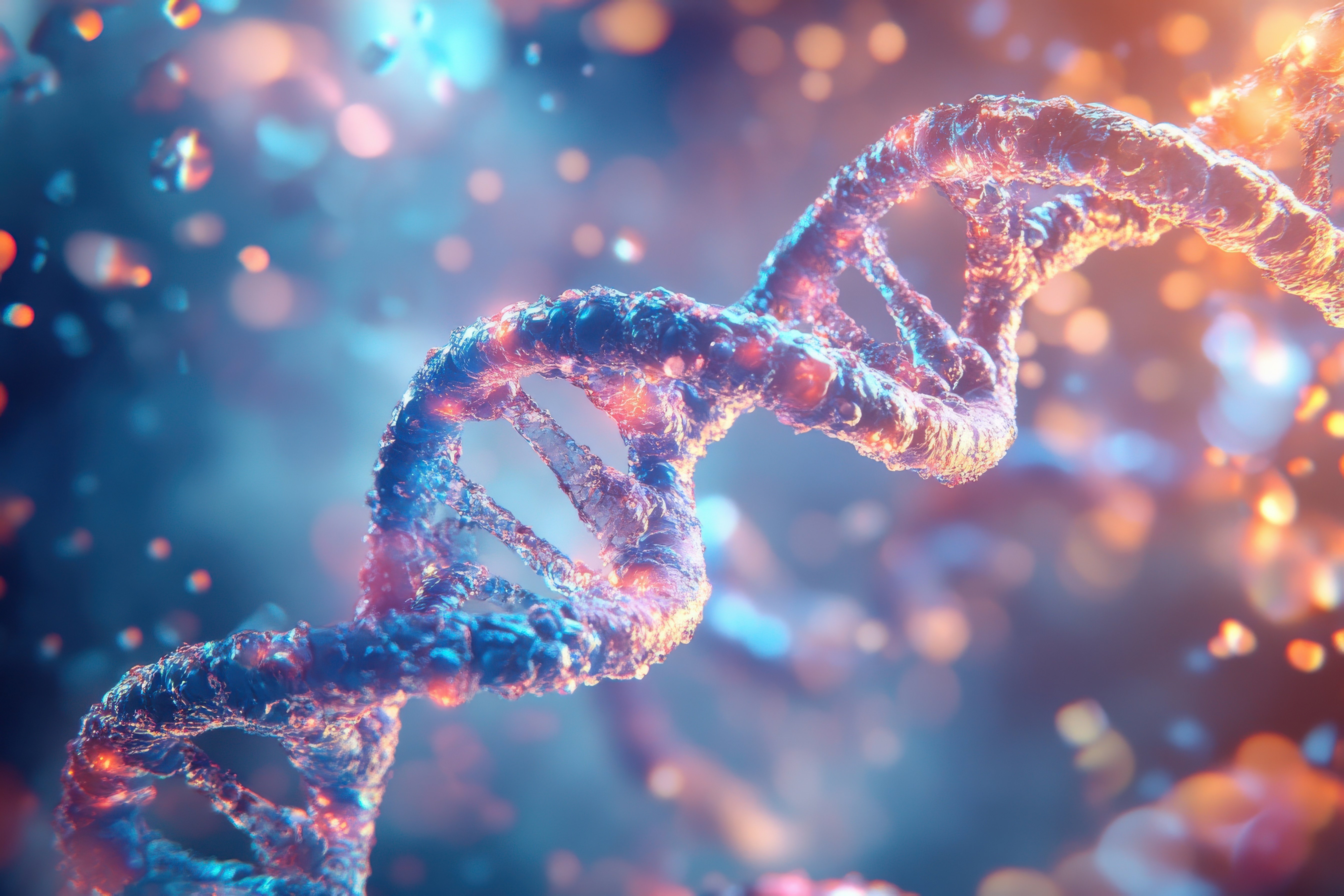
Istesso co-founder Lisa Patel is researching how to regenerate and repair tissue by modulating mitochondria. The method has the potential to treat multiple diseases of ageing, such as arthritis, bowel inflammation, lung scarring and even cancer across the body all at once. It’s a new era of holistic medicine, she claims.
Forward: features are independent pieces written for Mewburn Ellis discussing and celebrating the best of innovation and exploration from the scientific and entrepreneurial worlds.
A salamander can regrow limbs. A human cannot. But why? And is it possible to trigger the regeneration of human tissue?
Lisa Patel is the co-founder and CEO of Istesso, a company developing drugs to repair and regenerate human tissue. Her focus is mitochondria. The idea is to stimulate the mitochondria in a way that leads to dramatic tissue regrowth – treating a long list of diseases, many of which are unresponsive to current methods.

Lisa Patel, Istesso Co-Founder and CEO
‘This is year 16 of working on this,’ says Patel. ‘It began as a classic science story, with an initial observation of tissue regenerating. We were gobsmacked! How is it happening? It turns out it works by modulating mitochondria.’
As every schoolchild knows, mitochondria are the powerhouse of the cell. They convert glucose and oxygen into ATP, the cell’s main energy source.
‘They produce energy, but they do more than that,’ explains Patel. ‘They receive signals from the environment. They process those signals and organise themselves into little social networks within the cell. They leave the cell, go out and scan around and then come back. Why? No one really knows. They do all sorts of things we don’t learn about in school.’
Patel stresses that mitochondria remain comparatively understudied, which for her co-founder, Sam Williams, and their small team of scientists makes this avenue of research all the more intriguing.
The key is how mitochondria deliver instructions: ‘Mitochondria send a signal that orchestrates cells to work together to repair damage. Essentially the body responds by mobilising and co-ordinating repair.’
Istesso is researching compounds that prompt the mitochondria to issue repair and regeneration instructions. The results?
‘You can see them,’ says Patel. She produces an MRI scan of a wrist riddled with arthritis. The holes in the bones show as white patches. ‘Patients with rheumatoid arthritis get swelling and tenderness in joints. The underlying damage is these holes, called erosions, in the bones.’
She points to a second image. ‘Here you can see the same wrist at week 12 of our treatment. The holes are practically gone.’


The comparison is sensational. There is currently no cure for rheumatoid arthritis, only treatments to manage the condition. Istesso appears to have a method of reversing bone degeneration.
But that’s not the full story. The approach could have a whole body effect, putting damage in the lungs, bowels, muscles and bones into a state of renewal.
‘The possibility is to repair damage to all parts of the body at once,’ says Patel. ‘If you could do this, you could stop age-related accumulation of damage that leads to chronic disease. It’s a fundamental thesis of longevity medicine.’
More than a powerhouse
Patel is frank about the limited state of research into mitochondria-cell interactions. Her work is starting to illuminate some of the fundamental mechanisms.
She offers a reminder of something else schoolchildren are supposed to know: that humans are a curious hybrid of two entities. Around 1.5 billion to two billion years ago, an early form of mitochondrion merged with an early eukaryotic cell, leading to a symbiosis.
‘Mitochondria behave in our cells as prototypic bacteria,’ says Patel. ‘They’ve got their own DNA and own set of proteins. One of those is called complex I, because it’s a complex protein conglomerate and it’s number one in something called the electron transport chain. Our compounds are hitting that point. They are sending a signal saying that metabolism is changing, so the requirement for energy is different. A message is sent by the mitochondria, and cells respond in different ways. Immune cells calm down. And stem cells and structural cells, which build tissue, mobilise.’
The role of complex I
Mitochondrial complex I, also known as NADH:ubiquinone oxidoreductase, is a massive protein complex in the inner mitochondrial membrane responsible for the first step of the electron transport chain, a crucial part of cellular energy production. It oxidizes NADH and transfers electrons to ubiquinone, pumping protons across the membrane to create a proton gradient that drives ATP synthesis. Complex I is the largest and most intricate enzyme in the electron transport chain.

Blaza, J.N.; Vinothkumar, K.R.; Hirst, J. (2018)Mitochondrial complex I in the deactive state https://doi.org/10.2210/pdb5o31/pdb
The change in tissue is visible after treatment, even if the underlying mechanisms are opaque. ‘We don’t know exactly how complex I does that yet,’ says Patel. ‘Overall there are 45 proteins in the set.’ The origin of the research lies in observation, rather than a priori speculation. ‘We came across some really interesting compounds created by Professor Iain Greig, a chemist at the University of Aberdeen. These compounds had an unknown mechanism. We didn’t know they were hitting complex I, but they had an exciting effect on biology. We deconvoluted back and worked out how that new and interesting biology was triggered. This isn’t an approach we could have figured out by design.’
The effect is not organ specific. The compound interacts with mitochondria across the entire body. Istesso’s lead drug is called Leramistat and is being evaluated for its potential for musculoskeletal repair in muscle loss secondary to chronic disease. The molecule is also in development to treat age-related loss of muscle mass and to repair lung scar tissue caused by idiopathic pulmonary fibrosis. For the latter it has been granted both FDA Fast Track and Orphan Drug Designation. In theory, it could work on conditions from head to toe.
‘There are mitochondria present in every cell, apart from red blood cells,’ says Patel. ‘So the impact is everywhere. We’ve looked at diseases in animal models. We’ve looked at the joints, so bone and cartilage in arthritis. We’ve looked at the gut wall in models of inflammatory bowel disease, in lung models of fibrosis, at models of multiple sclerosis, and cancer models as well. Across all those different systems and settings, we see exactly the same profile of effects. We see a mobilisation of repair first, and then when the body starts to repair itself, inflammation starts to go down. And damage, like the kind of scarring seen with fibrosis, reduces.’
Trials in animals and 400 humans have been conducted. Arthritis was the focus. ‘We’ve seen the biggest impact on bone damage that’s ever been reported,’ says Patel.
Sensing these findings may be sensationalised, Patel sets out a little more context. She says while bone and tissue regeneration was impressive in the arthritis trials, there is still a long way to go. For arthritis sufferers this means the bone may improve, and the inflammation reduce, but there won’t be a miracle cure – at least not within the 12-week period covered by initial trials.
The commercial strategy
After almost two decades of research, Patel is naturally keen to get her molecules to market. Her company is making solid progress, although several years remain before they can be submitted for approval.
The main investor is IP Group, a specialist venture capital house with stakes in quantum chip maker Quantum Motion and DNA sequencer Oxford Nanopore. ‘They’ve supported us for the entire lifetime of the company,’ says Patel. ‘They are very patient!’. The Istesso team works in London’s King’s Cross at the IP Group offices – a pretty good place to be. ‘King’s Cross is the home of AI,’ says Patel. ‘It could be the home for regenerative repair.’
In addition to Leramistat, the company has two other molecules in R&D. Both follow the same principle of modulating mitochondria.
Intellectual property affairs are managed by Mewburn Ellis. ‘I started with Mewburn at the very beginning,’ says Patel. ‘They are supportive, very easy to talk to and not afraid of telling you when something is just never going to work. They can be forthright, but in a nice way!’
She works with Mewburn Ellis attorneys Joseph Morgan and Joe Newcombe, and partner Eliot Ward. ‘We spend a lot of time talking about what we should disclose in our patents versus what we should keep as trade secrets. We work out the sequence of what we are going to file and when to ensure we can obtain the maximum protection of the compound. If you work in a lean team, you really need that strategic insight. What I really love is that they’ll just proactively reach out to me and mention something relevant they saw. It makes me feel like we’re part of a team.’
The potential for mitochondrial treatments is exhilarating. But there’s a lot of work before the first product is launch-ready. Patel is aware that, as a pioneer, the path is particularly steep.
‘We can’t build off the work of others,’ she says. ‘No one understands the human capability to repair damage to their tissue yet. For example, we know that as humans get older, they take longer to repair. We don’t know why.’
She also has the challenge of working with regulators: ‘We face a philosophical challenge with regulators. They aren’t set up to handle something that could maybe either completely resolve disease or prevent it from happening in the first place. Historically, they have looked at symptom or damage management. We need to educate regulators on this kind of holistic approach. If you look at the Istesso website, we get quite philosophical about this topic.’
A new era of treatment
A glance at the Istesso website confirms how passionate Patel and her colleagues are about the ethos of whole-body therapies. She has written extensively on the need for revolutionary ideas in pharma research, especially for conditions with a multitude of issues such as inflammatory bowel disease. These are hard to treat via conventional methods, as there are so many strands of the condition to address.
‘I see a parallel with GLP-1 and Ozempic, which is taken for obesity, but has huge impacts on so many other things,’ she says. ‘Chronic diseases rarely just affect one part of the body. Patients may experience whole body changes. So our view is to take an approach that enables us to target a spectrum of disorders, such as disability, inflammation or fatigue. These can stem from changes in your epigenetics, or from changes in mitochondria and how they respond.’
The idea of regenerating like a salamander may be fanciful, but Patel urges researchers to be inspired by the history of drug discovery. She cites retinitis pigmentosa, the most common cause of blindness in developed countries, which conventional wisdom said could not be reversed; recent work with optogenetics has reversed that. ‘Conventional wisdom can be a formidable barrier to innovation. Rather than accepting it, we should venture outside it to discover new perspectives and solutions, and perhaps introduce people to possibilities they haven’t even imagined.’
Tissue regeneration is in its infancy. But the promise of mitochondria to stimulate repair in hard-to-treat diseases is formidable. The early results are dramatic. Tissue regeneration holds the promise of not merely treating intractable conditions such as fibrosis and muscle wasting, but reversing their course.
‘You’ve just got to look at the MRI of the arthritis patient to see an improvement,’ says Patel. ‘For us, and the patient, that’s super exciting.’
Written by Charles Orton-Jones.
Eliot Ward, Partner and Patent Attorney comments:
"This look at mitochondrial modulation reveals a fascinating new frontier in regenerative medicine. Once known simply as the cell’s powerhouses, mitochondria are now being explored as tools to repair and rejuvenate damaged tissues, with potential applications from pulmonary fibrosis to cartilage repair. For innovators, the challenge is not only in advancing the science, but also in securing robust IP protection for the methods and technologies that make these therapies possible - something we’re excited to help clients navigate as this space rapidly evolves."
Eliot is a highly valued partner at Mewburn Ellis and a key driver within the Life Sciences team. With a reputation for driving complex projects from inception to completion, he works with a diverse range of clients, from innovative startups to multinational corporations worldwide. Eliot handles a diverse client portfolio spanning the life sciences and MedTech sectors. A skilled patent prosecutor, Eliot also has wide experience of drafting patent applications on breakthrough technologies, as well as leading offensive and defensive opposition proceedings post-grant. Eliot is also experienced in handling Freedom to Operate projects and in performing due diligence, which have led to the successful completion of high value transactions and investment rounds.
Email: eliot.ward@mewburn.com
Sign up to our newsletter: Forward - news, insights and features
Our people
Our IP specialists work at all stage of the IP life cycle and provide strategic advice about patent, trade mark and registered designs, as well as any IP-related disputes and legal and commercial requirements.
Our peopleContact Us
We have an easily-accessible office in central London, as well as a number of regional offices throughout the UK and an office in Munich, Germany. We’d love to hear from you, so please get in touch.
Get in touch

